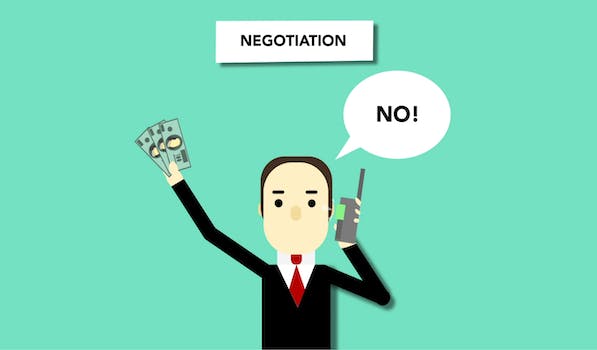How To Start A Ecommerce Business With No Money
“Launch your online store without breaking the bank with these simple steps.”
Introduction
Starting an ecommerce business can be a lucrative venture, but it can also require a significant amount of capital. However, it is possible to start an ecommerce business with no money by utilizing certain strategies and resources. In this article, we will explore some tips on how to start an ecommerce business with no money.
Dropshipping: A Beginner’s Guide
Starting an ecommerce business can be a daunting task, especially if you don’t have a lot of money to invest. However, with the rise of dropshipping, it’s now possible to start an online store without any upfront costs. In this beginner’s guide, we’ll walk you through the basics of dropshipping and how to start your own ecommerce business with no money.
What is Dropshipping?
Dropshipping is a business model where you sell products on your online store, but you don’t actually hold any inventory. Instead, when a customer places an order, you purchase the product from a third-party supplier who then ships it directly to the customer. This means you don’t have to worry about storing, packaging, or shipping products yourself.
How to Start a Dropshipping Business
Step 1: Choose a Niche
The first step in starting a dropshipping business is to choose a niche. This is the area of products that you want to focus on selling. It’s important to choose a niche that you’re passionate about and that has a high demand. You can use tools like Google Trends and Amazon Best Sellers to research popular niches.
Step 2: Find a Supplier
Once you’ve chosen your niche, you need to find a supplier who can provide the products you want to sell. There are many dropshipping suppliers out there, but it’s important to choose one that is reliable and has a good reputation. You can use platforms like AliExpress and Oberlo to find suppliers.
Step 3: Set Up Your Online Store
Now that you have a niche and a supplier, it’s time to set up your online store. You can use platforms like Shopify and WooCommerce to create your store. Make sure to choose a theme that fits your niche and customize it to your liking.
Step 4: Add Products to Your Store
Once your store is set up, it’s time to add products to it. You can use the supplier’s product descriptions and images, but it’s important to make them unique to your store. You can also add your own product descriptions and images to make your store stand out.
Step 5: Market Your Store
Now that your store is set up and you have products listed, it’s time to start marketing your store. You can use social media platforms like Facebook and Instagram to promote your store. You can also use paid advertising like Google Ads and Facebook Ads to drive traffic to your store.
Conclusion
Starting a dropshipping business is a great way to start an ecommerce business with no money. By following these steps, you can create a successful online store and start making money. Remember to choose a niche that you’re passionate about, find a reliable supplier, set up your online store, add products, and market your store. With hard work and dedication, you can create a successful dropshipping business.
How to Build an Ecommerce Website for Free

Starting an ecommerce business can be a daunting task, especially if you don’t have a lot of money to invest. However, with the right tools and resources, it’s possible to build a successful online store without breaking the bank. In this article, we’ll show you how to build an ecommerce website for free.
The first step in building an ecommerce website is to choose a platform. There are many free ecommerce platforms available, such as WooCommerce, Shopify, and Magento. Each platform has its own strengths and weaknesses, so it’s important to do your research and choose the one that best fits your needs.
Once you’ve chosen a platform, the next step is to choose a domain name and hosting provider. A domain name is the address of your website, while hosting is the service that allows your website to be accessible on the internet. There are many free hosting providers available, such as WordPress.com and Wix.com, but keep in mind that these providers may have limitations on the amount of storage and bandwidth you can use.
After you’ve chosen a domain name and hosting provider, it’s time to design your website. Most ecommerce platforms come with pre-designed templates that you can customize to fit your brand. You can also hire a web designer to create a custom design for your website, but this can be expensive.
When designing your website, it’s important to keep in mind the user experience. Your website should be easy to navigate and visually appealing. It should also be optimized for search engines, so that potential customers can find your website when searching for products or services.
Once your website is designed, it’s time to add products. This is where you’ll need to invest some time and effort. You’ll need to take high-quality photos of your products, write compelling product descriptions, and set prices. It’s also important to choose a payment gateway that allows customers to securely purchase products from your website.
After you’ve added products to your website, it’s time to start promoting it. There are many free and low-cost marketing strategies you can use to drive traffic to your website, such as social media marketing, email marketing, and content marketing. It’s important to track your website’s traffic and sales, so that you can make adjustments to your marketing strategy as needed.
In conclusion, building an ecommerce website for free is possible, but it requires time, effort, and a willingness to learn. By choosing the right platform, designing a user-friendly website, adding high-quality products, and promoting your website effectively, you can build a successful ecommerce business without spending a lot of money.
Social Media Marketing for Ecommerce: Tips and Tricks
Starting an ecommerce business can be a daunting task, especially if you have limited funds. However, with the right approach, it is possible to launch a successful online store without breaking the bank. One of the most effective ways to promote your ecommerce business is through social media marketing. In this article, we will explore some tips and tricks for using social media to grow your ecommerce business.
Firstly, it is important to choose the right social media platforms for your business. While it may be tempting to create accounts on every social media platform available, this can be overwhelming and ineffective. Instead, focus on the platforms that are most relevant to your target audience. For example, if you are selling fashion items, Instagram and Pinterest may be more effective than LinkedIn.
Once you have chosen your social media platforms, it is important to create a consistent brand image across all of them. This includes using the same profile picture, cover photo, and bio on each platform. Consistency helps to build trust with your audience and makes it easier for them to recognize your brand.
Another important aspect of social media marketing for ecommerce is creating engaging content. This can include product photos, videos, blog posts, and more. The key is to create content that is relevant and valuable to your target audience. For example, if you are selling fitness equipment, you could create workout videos or share healthy recipes.
In addition to creating content, it is important to engage with your audience on social media. This means responding to comments and messages, liking and sharing user-generated content, and participating in relevant conversations. Engaging with your audience helps to build relationships and can lead to increased brand loyalty.
One of the most effective ways to promote your ecommerce business on social media is through influencer marketing. This involves partnering with social media influencers who have a large following in your target market. Influencers can help to promote your products to their audience, which can lead to increased sales and brand awareness.
Another effective social media marketing strategy for ecommerce is running social media ads. Platforms like Facebook and Instagram offer a variety of ad formats, including carousel ads, video ads, and sponsored posts. Running ads can be a cost-effective way to reach a larger audience and drive traffic to your website.
Finally, it is important to track your social media metrics to measure the success of your marketing efforts. This includes tracking metrics like engagement rate, reach, and conversion rate. By analyzing your metrics, you can identify what is working and what needs to be improved.
In conclusion, social media marketing can be a powerful tool for growing your ecommerce business. By choosing the right platforms, creating engaging content, engaging with your audience, partnering with influencers, running ads, and tracking your metrics, you can effectively promote your online store without spending a lot of money. With persistence and dedication, you can build a successful ecommerce business that reaches a large audience and generates significant revenue.
How to Find and Sell Products on Amazon
Starting an ecommerce business can be a daunting task, especially if you have limited funds. However, with the right approach, it is possible to start a successful ecommerce business without spending a dime. One of the best ways to do this is by selling products on Amazon.
Amazon is the world’s largest online retailer, with millions of customers worldwide. By selling products on Amazon, you can tap into this vast customer base and reach a wider audience. Here’s how to find and sell products on Amazon without spending any money.
1. Research the Market
The first step in finding and selling products on Amazon is to research the market. You need to identify products that are in demand and have a high profit margin. To do this, you can use Amazon’s Best Sellers list, which shows the top-selling products in each category.
You can also use tools like Jungle Scout or Helium 10 to research the market and find profitable products. These tools provide data on sales volume, competition, and profit margins, which can help you make informed decisions about which products to sell.
2. Find a Supplier
Once you have identified a profitable product, the next step is to find a supplier. You can use platforms like Alibaba or AliExpress to find suppliers who can provide you with the products you want to sell. These platforms allow you to connect with suppliers from all over the world and negotiate prices.
When choosing a supplier, make sure to check their reviews and ratings to ensure that they are reliable and trustworthy. You should also ask for samples of the products to ensure that they meet your quality standards.
3. Create a Listing
Once you have found a supplier, the next step is to create a listing on Amazon. This involves creating a product page that includes a title, description, and images of the product. You should also set a price for the product and choose the shipping options.
When creating a listing, make sure to use keywords that are relevant to the product. This will help your listing appear in search results when customers search for similar products. You should also optimize your listing for mobile devices, as many customers use their smartphones to shop on Amazon.
4. Promote Your Listing
Once your listing is live, the next step is to promote it. You can use social media platforms like Facebook and Instagram to promote your listing and reach a wider audience. You can also use Amazon’s advertising platform to promote your listing to customers who are searching for similar products.
When promoting your listing, make sure to highlight the benefits of the product and why customers should buy it. You should also offer promotions and discounts to encourage customers to buy your product.
5. Fulfill Orders
When a customer places an order for your product, the next step is to fulfill the order. This involves packaging the product and shipping it to the customer. You can use Amazon’s fulfillment service, Fulfillment by Amazon (FBA), to handle the shipping and handling of your products.
FBA allows you to store your products in Amazon’s warehouses and have them shipped to customers when they place an order. This can save you time and money, as you don’t have to handle the shipping and handling yourself.
In conclusion, starting an ecommerce business on Amazon is a great way to start a business with no money. By researching the market, finding a supplier, creating a listing, promoting your listing, and fulfilling orders, you can start a successful ecommerce business without spending any money. With hard work and dedication, you can build a profitable business on Amazon and achieve financial freedom.
Bootstrapping Your Ecommerce Business: Creative Financing Ideas
Starting an ecommerce business can be a daunting task, especially if you don’t have a lot of money to invest. However, with the right mindset and a little creativity, it is possible to start a successful ecommerce business without breaking the bank. In this article, we will explore some creative financing ideas that can help you bootstrap your ecommerce business and get it off the ground.
1. Start Small
One of the best ways to start an ecommerce business with no money is to start small. Instead of trying to launch a full-fledged ecommerce store, start by selling your products on existing platforms like Amazon, Etsy, or eBay. These platforms allow you to list your products for free and only charge a commission when you make a sale. This way, you can test the waters and see if there is a demand for your products before investing in a full ecommerce store.
2. Crowdfunding
Crowdfunding is another great way to finance your ecommerce business. Platforms like Kickstarter and Indiegogo allow you to raise money from a large number of people who are interested in your product or idea. You can offer rewards or incentives to those who contribute to your campaign, such as early access to your product or a discount on their purchase. Crowdfunding can be a great way to raise money without taking on debt or giving up equity in your business.
3. Bartering
Bartering is an age-old practice that can be used to finance your ecommerce business. If you have a skill or service that is valuable to others, you can trade it for goods or services that you need for your business. For example, if you are a graphic designer, you can offer your services to a web developer in exchange for a website for your ecommerce store. Bartering can be a great way to get what you need without spending any money.
4. Dropshipping
Dropshipping is a business model that allows you to sell products without holding any inventory. Instead, you partner with a supplier who ships the products directly to your customers. This way, you don’t have to invest in inventory upfront, which can save you a lot of money. Dropshipping can be a great way to start an ecommerce business with no money, as you only pay for the products when you make a sale.
5. Affiliate Marketing
Affiliate marketing is another way to start an ecommerce business without any money. With affiliate marketing, you promote other people’s products and earn a commission on each sale. You don’t have to invest in any inventory or create your own products, which makes it a low-risk way to start an ecommerce business. You can promote products through your website, social media, or email marketing campaigns.
6. Bootstrapping
Bootstrapping is the practice of starting a business with little or no outside funding. This means that you have to be creative and resourceful in order to make your business work. You can save money by doing things yourself, such as building your own website or creating your own marketing materials. You can also look for free or low-cost tools and resources to help you run your business.
In conclusion, starting an ecommerce business with no money is possible if you are willing to be creative and resourceful. By starting small, crowdfunding, bartering, dropshipping, affiliate marketing, and bootstrapping, you can get your ecommerce business off the ground without breaking the bank. Remember, the key to success is to stay focused, be persistent, and never give up on your dreams.
Conclusion
Starting an ecommerce business with no money is possible, but it requires a lot of hard work, dedication, and creativity. Some of the key steps to take include identifying a profitable niche, creating a business plan, building a website, and leveraging social media and other marketing channels to promote your products. It’s also important to be patient and persistent, as success may not come overnight. With the right approach and mindset, however, anyone can start a successful ecommerce business without breaking the bank.






